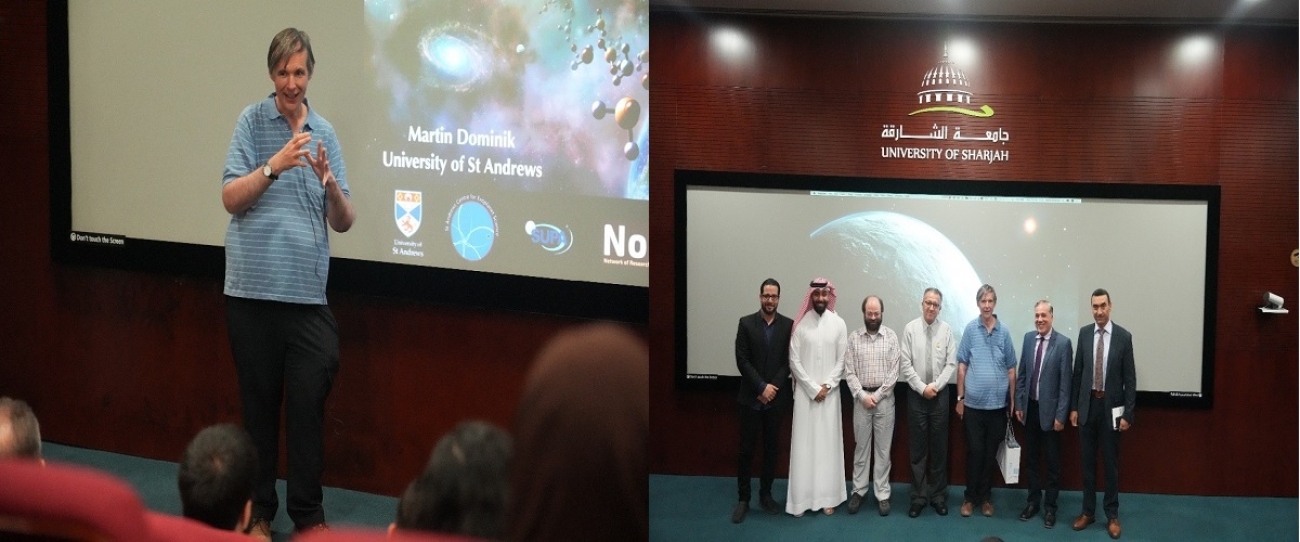The lecture was given by Dr. Martin Dominik, a Reader at the School of Physics & Astronomy of the University of St Andrews, Co-Director of the St Andrews Center for Exoplanet Science, and President of the Network of Researchers on the Chemical Emergence of Life (NoRCEL). Since 1993, Martin's research has focused on applications of the gravitational microlensing effect, particularly its potential for studying planets orbiting stars other than the Sun. Martin strongly advocates communication as an essential part of science and science as an integral part of society. He organized a Royal Society 350th anniversary year Discussion Meeting on "The detection of extra-terrestrial life and the consequences for science and society." He also established a program called "Fascination Astronomy," supporting education and capacity building in Qatar. Martin was elected member of the Global Young Academy and the SETI Permanent Committee of the International Academy of Astronautics. He is interested in policy dimensions and engaging across national borders and the sciences, humanities, and arts.
In his lecture "Planets and our Cosmic Context," Dr. Martin explained that planet Earth provides a cosmic oasis for us to reside in. How peculiar can it be? If the laws of nature are universal, how can it be the case that there is only one instance of life, and exactly one – or do we simply not know better? There is no shortage of the building blocks of life, but how did we get here? Having found about 5000 planets orbiting stars other than the Sun has changed everything. While the Hertzsprung-Russell diagram nicely illustrates the connection between demographics and the evolutionary history of stars, we do not have any equivalent for planets whose crusts, oceans, and atmospheres potentially start to co-evolve with the life they are hosting. Detecting life is hard, not least because we do not know what "life" is. Are we still missing a fundamental law of nature that describes how it emerges?



